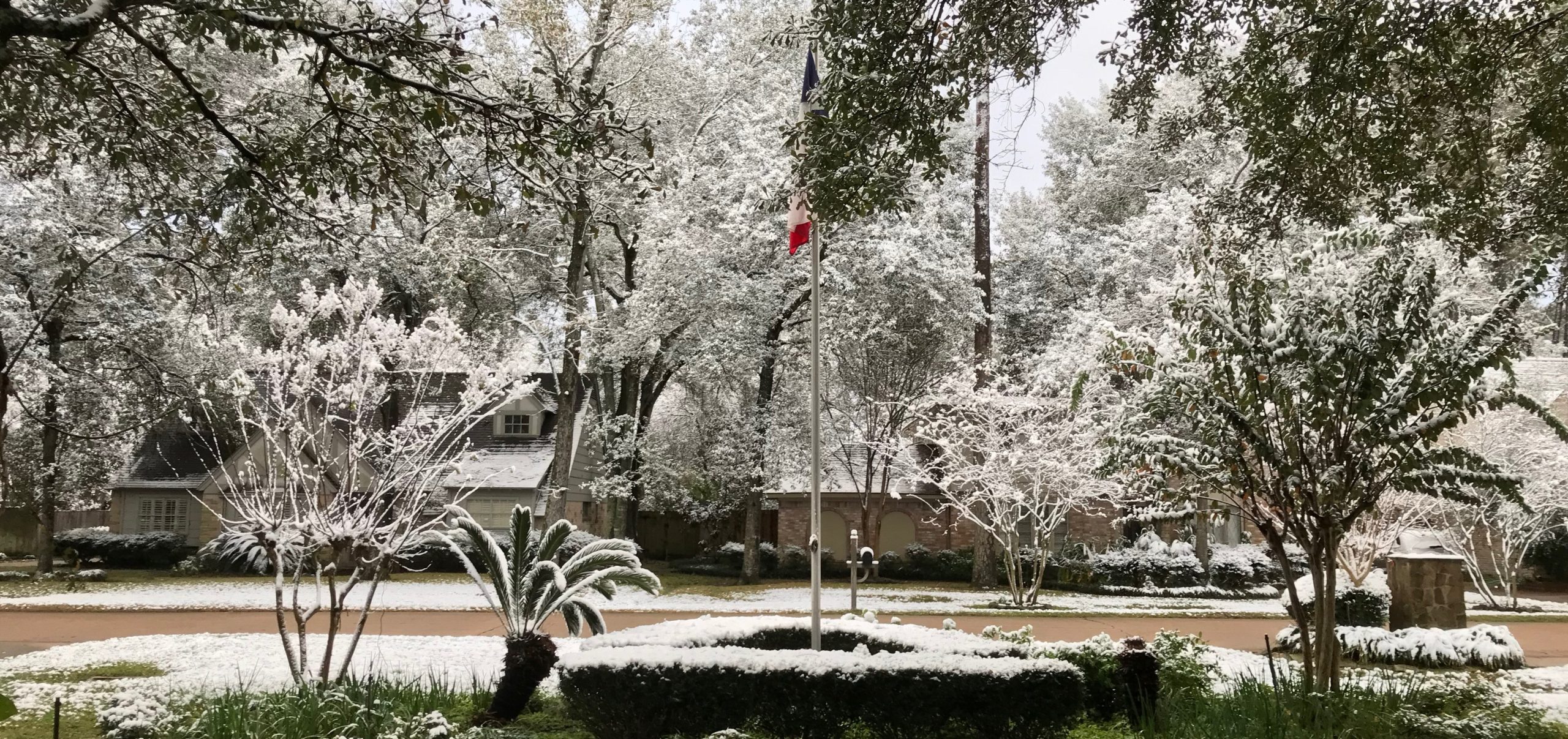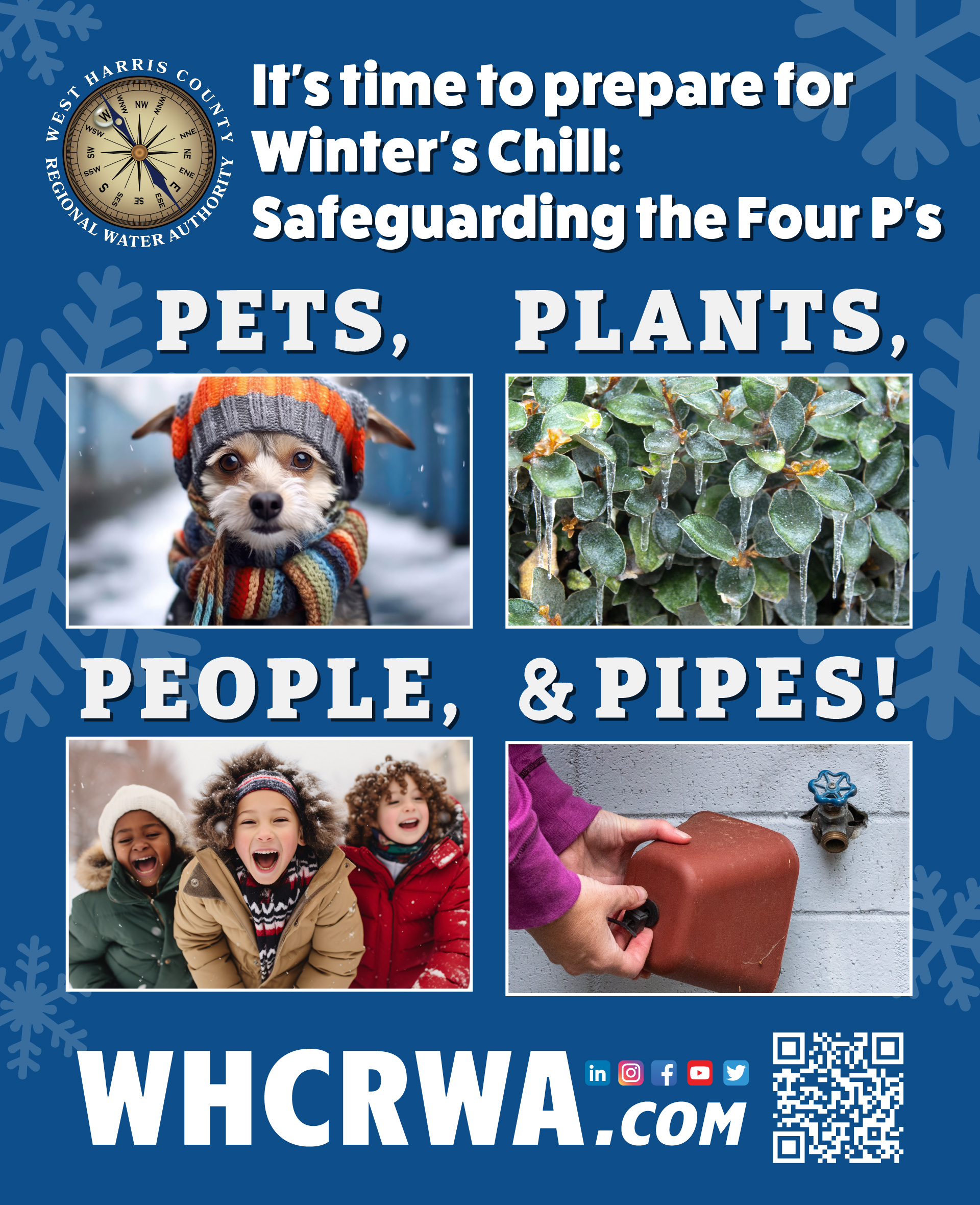
This might be Houston, but you never know when we’ll encounter extreme winter weather conditions. Given that Houston doesn’t freeze every year, it’s easy to overlook the fact that it’s not just our plants and pets that require special care when the thermometer drops into the freezing zone.

During prolonged cold snaps, with more than 36 hours of temperatures below 32 degrees, water pipes that pass through outside walls without adequate insulation may begin to freeze. This causes one of the nastiest of household calamities – broken pipes through which water escapes to cause amazing damage. Drips can spring up where you didn’t even know there were pipes — like over the hot water heater or along the bathroom wall.
Here are some common sense things you can do to minimize the risk of pipe damage…
- Insulate your house. Reduce air leaks to keep heat in and cold out. Caulk or weatherstrip doors and windows. Pay special attention to outside walls where pipes are likely to be located — near kitchens, bathrooms and laundry rooms — and add insulation if possible.
- When temperatures drop below freezing, leave cupboard doors under kitchen and bathroom sinks open to keep the pipes warm.
- Plan to be away during the winter months? Ask a neighbor or family member to make a special house check if the temperatures take a nose dive. If you have taken care of winterizing basics, these spot checks will make sure nothing has gone wrong to cause a water leak to occur.
- Keep pipes from freezing. Wrap the pipes in insulation made especially for water pipes, or in layers of old newspaper, overlapping the ends and tying them around the pipes. Cover the newspapers with plastic to keep out moisture. Do this for any pipes you can access that are near outside walls, mostly under sinks. Wrap the outside faucets and all exposed pipes, as well.
- Check the manufacturer’s instructions for winterizing advice for above ground hot tubs or spas. Fortunately, cold spells don’t usually stay around long enough to threaten inground pools, although it is a good idea to check your owner’s manual for winterizing tips… just in case.
- If you have an irrigation system, turn off the water to the sprinklers at the main valve. Set the automatic irrigation controller to the “rain” setting, and turn on each of the valves to release pressure in the pipes. It is usually not necessary to drain all of the water out of any irrigation components because in temperate climates like Houston, the ground doesn’t usually freeze at that depth. The above ground equipment does need to be protected, however. Self sticking foam insulating tape or tubes work well. Sprinkler system suppliers may offer additional advice or supplies to help your weatherizing process. Do make sure that the main shutoff valve for the system is “freeze proof.”
When the pipes thaw, listen carefully for the sound of water running when the faucet is turned off. This could indicate a broken water line, and this should be reported to your water district at once. Depending on where the break is located, it may your responsibility to repair — and the sooner the better!
